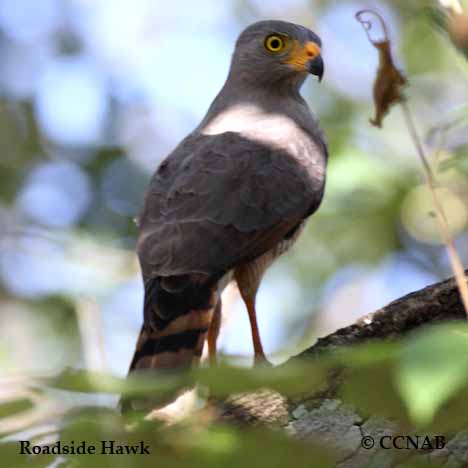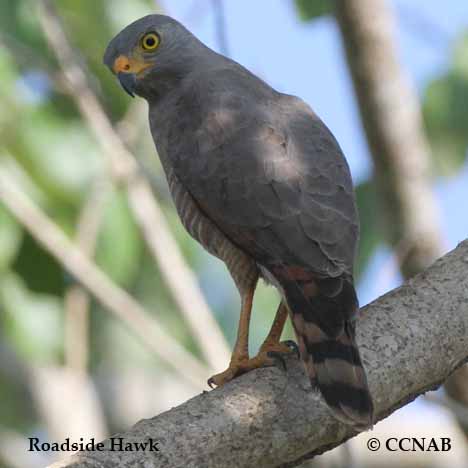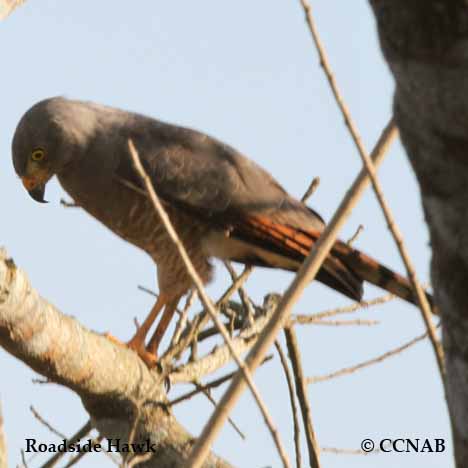North American Bird Search Box
This search box can be used to find bird species using bird's english, french or latin name, or to identify bird by its 4 letter Alpha Code
Field Guide for all the Birds of North America
Roadside Hawk
4 Letter (english names) Alpha Code: ROHA (4)
Buse à gros bec
Rupornis magnirostris
Information, images and range maps on over 1,000 birds of North America, including sub-species, vagrants, introduced birds and possibilities
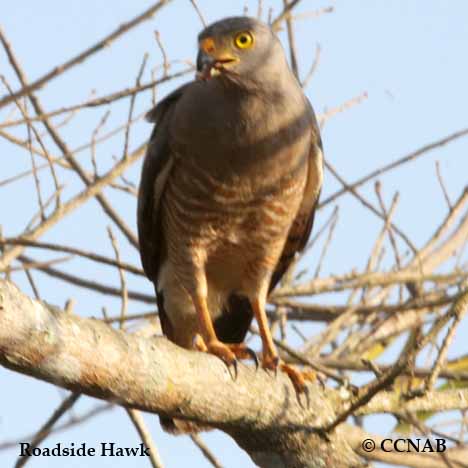
Species: The Roadside Hawk (Rupornis magnirostris) is a vagrant bird of prey seen in Texas, along the Rio Grande River in the extreme southeastern regions. This is the smallest member of the buteo family. Prefers open landscape with groves of trees. It seldom soars but is commonly seen perched along highway on fenceposts or utility wires. It has an upright posture when seen perched. Seems to be comfortable around people and shows little alarm when approached.
Distinctions: Adults are similar, females larger than the males. Mostly, grey back, head and neck, orange or reddish-brown barring on lower breast, light barring seen on the underwings. Multiple bands on tail. Underwing shows large orange patches near the wingtips. Juveniles display whiter plumage from below, grey head and back. Tail has multiple Banding: but not as heavy or as wide as the adults. Shows a hint of a whitish-grey supercilium.
Voice: Call notes sounds like nasal sharp "kee-yoouuu".
Nesting: Two to three white and brown eggs. Nest built in the higher limbs of mature trees. Nest composed of branches, sticks, twigs, grasses and other soft materials.
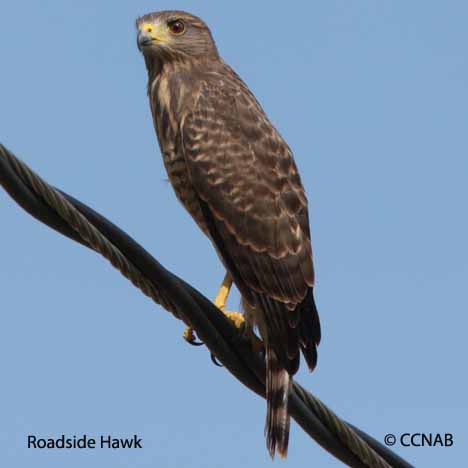
Life, Habitat and Pictures of North American Hawks
| B L | W W | W | Family | Latin Name |
|---|---|---|---|---|
| 16" 40cm | 30" 76cm | 1.5lb 0.7kg | Accipitridae | Rupornis magnirostris |
- Summer
- Year Around
- Winter
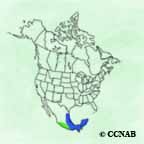
Distribution: A rare visitor north of the Rio Grande River in the regions west of Brownsville, Texas. A common hawk found throughout the southern regions of Mexico, along the Pacific and Caribbean coast but not common in the central areas. Common throughout Central and South America. It prefers lower elevations from sea level up to 500 meters.
Reference to Other Bird Site:
ABA - American Birding Association This site represents an organization that maintains official records of all birds species that have been proven to have been seen inside the perimeters of the North American Continent and the surrounding bodies of water. Regular revised versions are posted to keep the bird list current at all times. This is the list used by all serious birders over their lifetime. You may be aware of the movie called the "Big Year". It was with this list that all the competing birders used in an attempt to set a new record as to how many bird species that could be seen by an individual birder in one calendar year.
